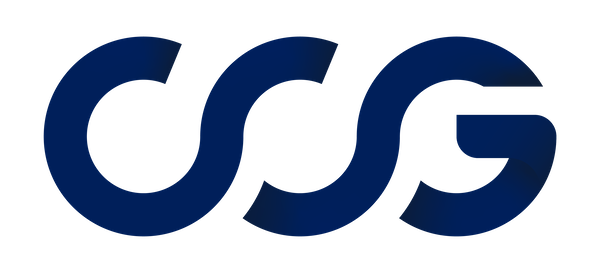Ben Davies from ChapmanCG interviews the senior team at Silo.AI – the largest private AI lab in the Nordics – on what global HR leaders need to know about AI.
How will AI and automation disrupt the future of work? How can we harness the future of AI and prepare for it? These are hot topics we hear every day when talking to global HR leaders, and AI feels like it’s the least accessible and least understood HR technology buzzword.
To find out the realities of AI and what HR leaders need to know from the experts, it was a privilege to talk to three of the senior leaders at Silo.AI – Ville Hulkko, Founder and CCO, Alex Finn, Lead Architect, and Theo O’Donnell, Head of AI, Finance.
We hope you enjoy their pragmatic approach and clarity on the real world applications of AI as much as we did.
If you like this interview, then I would recommend Blockchain technology’s impact on HR to get the reality behind another often cited – but not truly understood – technology with potential in the world of HR.
BD: What role can HR leaders play in future applications of AI in the function?
VH: I think people are mostly concerned about how the HR business function is going to change with new technologies and new tools. But in my opinion, it’s more important to understand how AI is affecting organisations in general in terms of organisational structures, ways of working and collaboration between AI and employees.
AH: HR as a business function needs to play a key role in the whole transformation process from where we are right now through to where we should be with the artificial intelligence implemented in the organisation.
BD: How can HR leaders introduce AI into an organisation? What advice would you give someone contemplating the introduction of an AI tool?
VH: What we almost always end up doing when we work with a large-scale organisation is also guiding the narrative and the message that an organisation should be spreading for AI projects.
AI is a punchy topic – for some people it’s still a mystery, and others perceive that it’s the next industrial revolution, when a whole part of humanity is basically laid off from work.
I think that for HR professionals, especially working in large-scale organisations, it is important to start educating themselves about what sort of narrative to use when discussing the implementation of AI in pre-existing processes.
We focus on AI in core business operations, but you can augment almost any operation with artificial intelligence or machine learning if you do it properly, which means that it can go from the most operative, mundane tasks of the business all the way to management. So how do you structure the message in your organisation so that AI is perceived as something that augments your work and doesn’t take it away?
AF: We’ve sat at meetings with top executives of large-scale corporations, who have boasted that they took an AI technology and they were able to fire a section of their customer service department. Every time I hear a narrative like this, it makes the hair on my neck stick up, because that’s basically the worst possible way to discuss a future positive transformation. It creates a counter impact and, at worst, that can lead to the delaying of AI in an organisation by a matter of years.
TO: A management team can push, but it can’t drive the transformation unless the entire organisation is on board. I feel that while it’s not entirely HR’s responsibility for the conversation, HR must certainly be able to support it in the right way.
BD: What are the key challenges for companies that are looking to implement AI as part of their HR processes?
VH: When you broadly think of HR as anything that affects employees, one important part is the varying levels of AI readiness in different organisations. If you look at what companies like Google, IBM and Amazon are doing – these companies that are sitting on top of data – they have well-defined data collection and processing practices already.
This is very different from most organisations and I think the biggest challenge is data practices, because that is the lifeblood of AI at the end of the day.
TO: One of the specific challenges for HR when it comes to machine learning is that most of the data is subjective. If you think about resumes, performance metrics – any of the numbers that are associated with employees – most of these are very subjective. Dealing with subjective data in the machine-learning world is a delicate issue and of course there is a strong need to avoid biases.
BD: What are the key elements to think about for human beings as the use of AI grows?
VH: People imagine that the success or failure is measured by the quality of the algorithm, but more often than not success is measured on how well you integrate a human into that loop. So basically, how do you bring the expertise of a person who has been working for 15 years that has a tremendous amount of silent knowledge and use that to augment the AI?
AF: We are not looking to automate the work of a human, but we are sort of freeing the human to validate the work of the AI to make sure it learns the right things and makes individuals and organisations more efficient. Learning those processes and where you can input that sort of logic in a corporation’s process is quite essential. It means not removing the human from the loop, but rather integrating their expertise.
TO: This really gets to the heart of where I think AI can add the most value, and it softens some of the fear that many business leaders have about the introduction of AI into their businesses.
BD: The biggest fear for many is replacing the human side, especially as HR is all about people and culture. How do you tackle these concerns about AI?
VH: It is very important that they don’t feel that the company is being wholesale taken over by the introduction of algorithmic processes. Businesses want to retain control of their own culture, at the recruitment stage perhaps more than any other stage, because that determines who you are going to be as an institution. Allowing the technology to support human decision-making and improve existing processes is what we are trying to deliver.
BD: You mentioned recruiting has a huge potential for improvement through AI. What solutions are you seeing being implemented in this space?
VH: In HR, and recruiting in particular, the biggest problem is often the sheer volume and scale of a task. The human operator needs to be able to review every single application and use their intuition to make decisions on who moves forward. Why not quantify that intuition? Why not track these decisions and the future impact they have in the organisation?
For example, find out how an employee has performed throughout their career and then backtrack to the recruitment cycle as a data science exercise to start finding these virtuous features when new applications come in.
Of course, you can’t rely on the data science exercise alone because the needs of an organisation change, the world changes, applications change, strengths change. You still need to have the human recruitment expert in the loop, validating and guiding those results, so that we don’t base future decisions on the past world only.
AF: Traditionally, recruiting is probably one of the most visible areas in HR, so that is why there are so many different solutions and why people are really concerned with it. For HR professionals, I think it is also quite clear that there are more and more applications of AI that are appearing for other areas of HR.
VH: Another example is the capability of a computer vision system to recognise the heart rate of a human being from their face using a regular webcam or iPhone camera. When you start combining computer vision with some of the most advanced features like heart rate detection, facial expression analysis, speech patterns and so forth, you can start building very interesting data-gathering methods that help to assist with video interviews or video calls.
Now it sounds rather eerie, learning to know if you are lying or not. But if you build this capability in a very sensible and transparent way, in accordance with GDPR here in Europe and similar legislation around the world, you can build solutions that give HR professionals additional tools to make better decisions with greater understanding.
BD: How is this being used at the moment, and how could it help HR?
VH: Some firms are already deploying that kind of non-linguistic, mood interpretation software to help call centre answerers pick up when a customer is a little more vexed or a little more anxious than the average person could detect, based on non-verbal cues that have been given over the call.
AF: You could start to see those kind of use cases extrapolated out from just simple call centre answers into more high-level functions, like sales processes or contract negotiations. Obviously there are ethical implications and it needs to be as transparent as possible to all the people who are taking part in a process.
TO: When you see the possibility of augmenting the type of things that humans are not very good at picking up on, particularly in complex situations, AI can really help cut through some of the complexity and support human decision-making.
BD: Where can HR leaders go for more information on AI or recommend for their teams?
VH: You don’t need HR-specific content, but rather more generic, high-level content on artificial intelligence in the workplace. I am sure that many HR leaders will be familiar with publications from Deloitte. David Green from IBM produces a lot of higher-level publications on HR as a business function. I would highly recommend HR professionals dedicate themselves to the impact of AI in a more general way.
AF: You can also join 500+ subscribers that keep up to date on the latest developments in AI through the Silo.AI monthly newsletter. Following Silo.AI on social media is also a very good way of getting access to some of those less hyped, but more real-world applications that we’re building and developing for our clients.
About Silo.AI
Silo.AI has developed a White Paper on how AI can be used in recruitment that you can download at: https://silo.ai/blog/#whitepapers.
Silo.AI is the largest private Artificial Intelligence lab in the Nordics that builds AI as a service. Silo.AI believes in a future where artificial intelligence enhances and empowers human capacity, making humans more productive and more creative. The most powerful strategy is to combine human intelligence with machine-driven insights. Silo.AI helps companies achieve a competitive edge by producing strategic artificial intelligence as part of the company’s core business processes beyond the industry boundaries.


 Elaine Khoo
Elaine Khoo Steve Brown
Steve Brown Katherine Qu
Katherine Qu Kalkin Cao
Kalkin Cao Fiona Jury
Fiona Jury  Paul Jury
Paul Jury  Andrea Merrigan
Andrea Merrigan Orelia Chan
Orelia Chan Stanislav Medvedev
Stanislav Medvedev Fleur Daniell
Fleur Daniell Finian Toh
Finian Toh Tim Rayner
Tim Rayner Nicola Hasling
Nicola Hasling Stefanie Cross-Wilson
Stefanie Cross-Wilson

